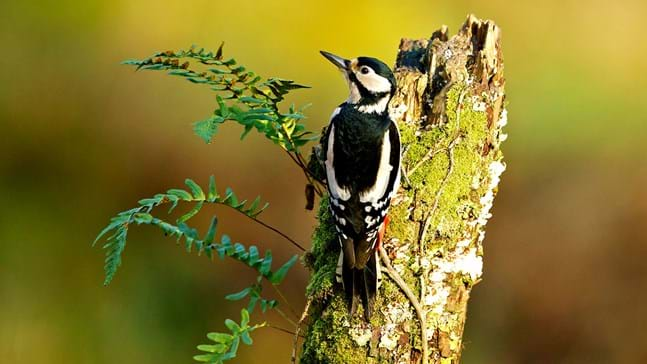
Credit: Tony Cox / WTML
What do great spotted woodpeckers eat?
Insects are the great spotted woodpecker's main prey. It uses its powerful beak to hammer holes in tree bark and then extracts beetle larvae with its long, flexible tongue. Caterpillars, adult beetles and spiders are also taken. In spring, the chicks and eggs of smaller birds are often eaten. Species that nest in tree cavities are targeted as woodpeckers can use their beaks to access these spaces. Nuts and seeds are also an important food source, particularly in winter.








